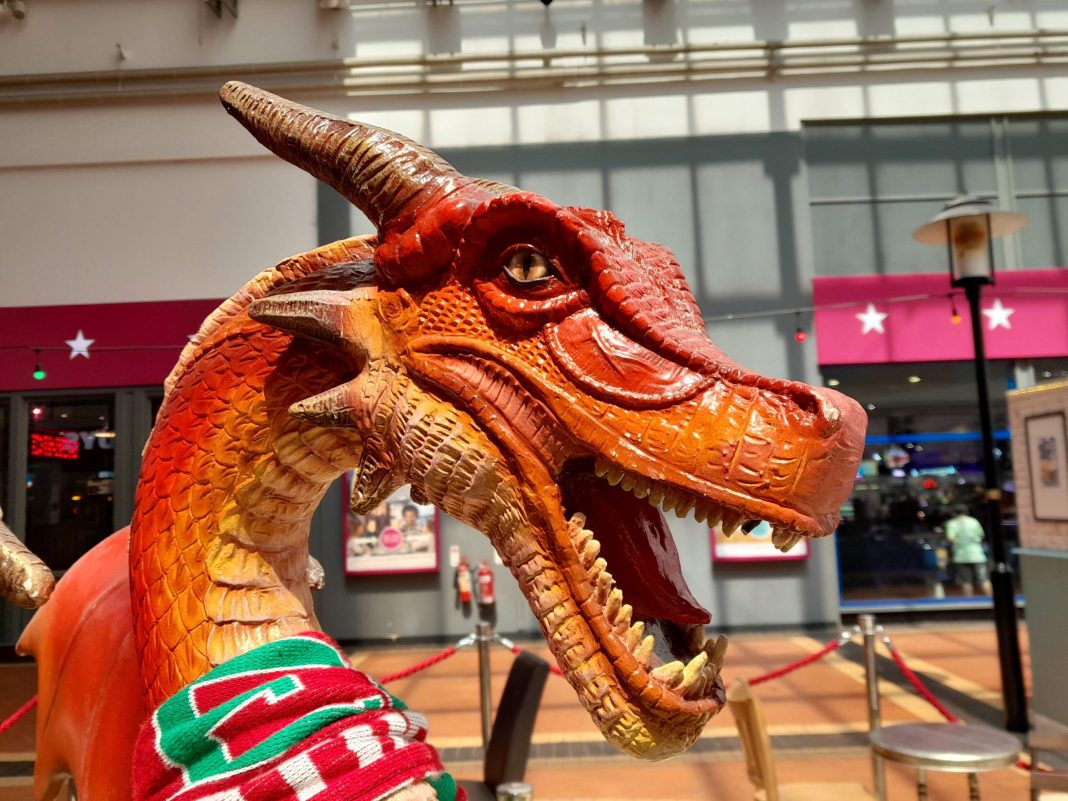There’s a special charm about returning to the place you spent almost your entire life: everything feels familiar and yet you perceive your surroundings with the fresh perspective of the visitor you now are.
To carry on from Returning to Wales – what I loved Part 1, here are some more things that filled me with joy on our recent trip, again in no particular order.
Follies
Definition of folly: a building with little or no function, and which pretends to be something that it is not.
I’m hazarding a guess that Folly Tower above Pontypool is one such building. Known affectionately by locals as ‘the folly’, the tower is around 40 feet high and stands roughly 1,000 feet above sea level. It’s thought the original tower dated back to 1765–1770, but it was demolished during the Second World War due to fears it could present a landmark for German planes seeking to bomb the nearby Royal Ordnance Factory. Plans to rebuild the structure after the war were abandoned in favour of new housing and it wasn’t until the nineties that Folly Tower was finally rebuilt, using stone from a recently demolished primary school.
The very first hike Harri and I did together as work colleagues passed the folly and so this place holds happy memories for us both.

Ancient buildings
Wales is famous for its castles – we have more castles per square mile than any other European country, including Portugal. Caerphilly Castle, six miles up the road from the village where we lived, is the largest castle in Wales and the second largest in Britain (after Windsor Castle – or Dover Castle, depending on who you believe).
But it’s not just castles. We also have Roman ruins (Caerleon and Caerwent being notable South East Wales sites), burial mounds, manor houses and monasteries. As this trip focused on us revisiting old haunts, we headed to the Black Mountains where, as always, we were bowled over by the moody and majestic 900-year-old Llanthony Priory.

Wild ponies
So much of our time in Wales was spent yomping across hills and heathland where we frequently encountered wild ponies. These beautiful and hardy creatures graze on the open hillside in all weathers. Those we passed on Hatterill Hill in the Black Mountains barely cast a glance in our direction. While I shivered and regretted not wearing gloves, they appeared entirely unfazed by the freezing, early June temperature.

Mountains on your doorstep

Okay, I understand that this doesn’t apply if you live on the Gwent Levels or even most of Cardiff, but a lot of Welsh people go about their daily lives with a mountain – or often mountains – on their doorsteps. In our case, it was Mynydd Machen, the summit of which was a mere three miles from home via fields, forest, crumbling lanes and a final climb across heathland to the trig point on the top. At 1188 feet (362 metres) high, Mynydd Machen isn’t the highest peak in the area – that title goes to nearby Twmbarlwm which boasts 1370 feet (419 metres) and has an Iron Age hillfort on the top – but it was our nearest hill and we climbed it regularly. For that reason, and the expansive views across the Bristol Channel, we felt we owed it a visit.

Piers
Piers are not unique to Wales, but I don’t think there are any pleasure piers in the Algarve (please correct me if I’m wrong). Ever since I walked to the end of Southend pier when I was 11 and made an infamous recording of the Marilyn Monroe classic I want to be loved by you in a booth, I’ve always loved piers. Southend stretches 1.33 miles (7022.4 feet) into the Thames estuary, making it the longest pier in the world. The longest pier in Wales – Llandudno – is 2295 feet, which makes our local pier at Penarth look like a positive minnow in the world of piers. At just 650 feet, Penarth pier won’t give you the same sense of being out at sea as its longer counterparts. On the bright side, there is no charge to walk along the well-maintained boardwalks and the public toilets are clean (and free).

Dragons
You can’t go to Wales and not come across the odd dragon or two. We stumbled upon this toothy fellow at Mermaid Quay in Cardiff Bay.

Crocodiles
Bet you didn’t see this one coming! Let me explain. The author Roald Dahl was born to Norwegian parents in Cardiff in 1916. A nod to his children’s popular book, The Enormous Crocodile, this iconic bench is located on the popular embankment trail which leads across the barrage at Cardiff Bay. We didn’t stop to use the bench on this occasion – we were heading to Penarth – however, it was refreshing to spot one that wasn’t randomly placed.

Tiny houses
Last but not least, this gorgeous little door at Llantarnam boating lake reminded me of all the picture books I devoured as a child where a small mammal – maybe a squirrel or a mouse – lived inside a tree trunk which had been transformed into what we’d now call ‘a tiny house’. There was always a very cute little bed and said mammal inevitably wore an apron. I’m pretty sure I’m not making this up!

I hope to be returning to Wales in the autumn, when I’m certain to encounter more things to love. In the meantime, I plan to appreciate my current home and friends here in Portugal’s stunning Algarve.
Related















